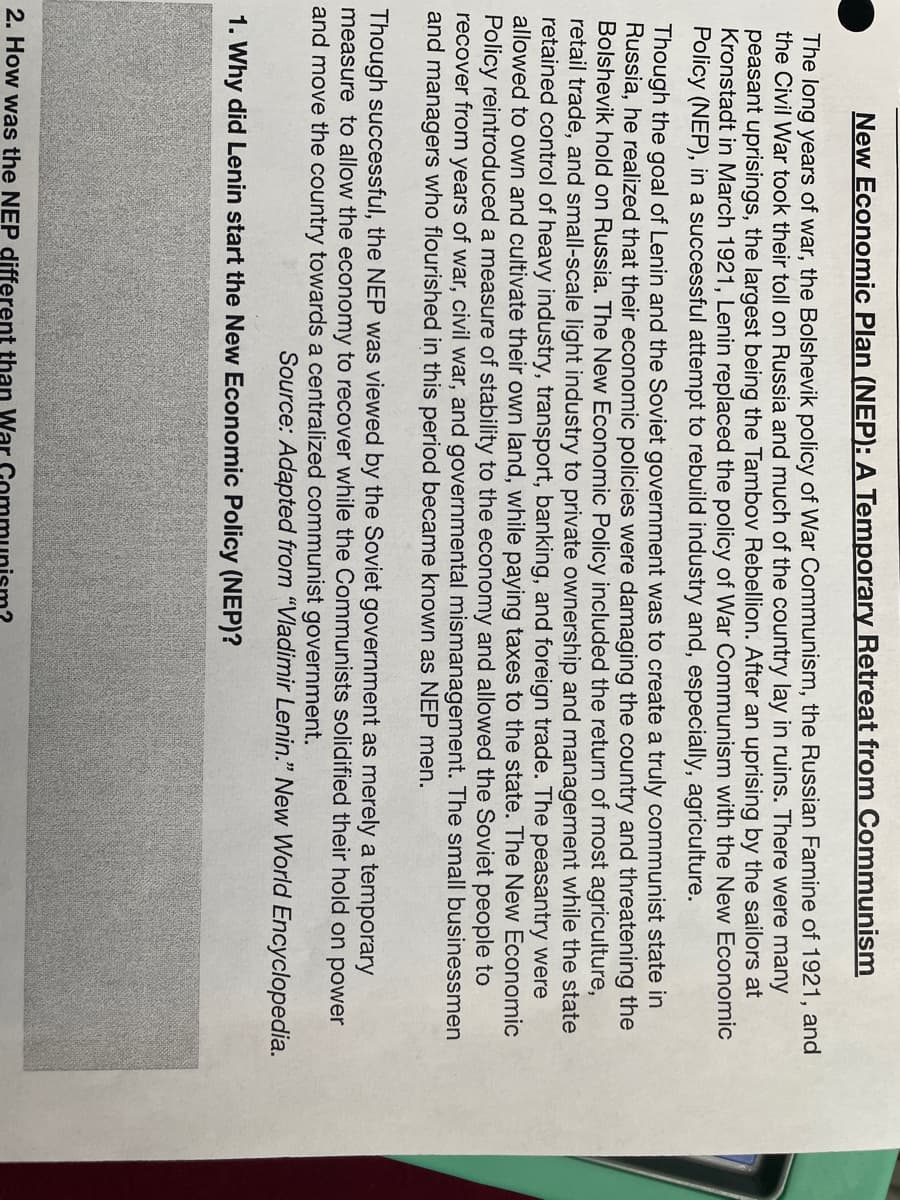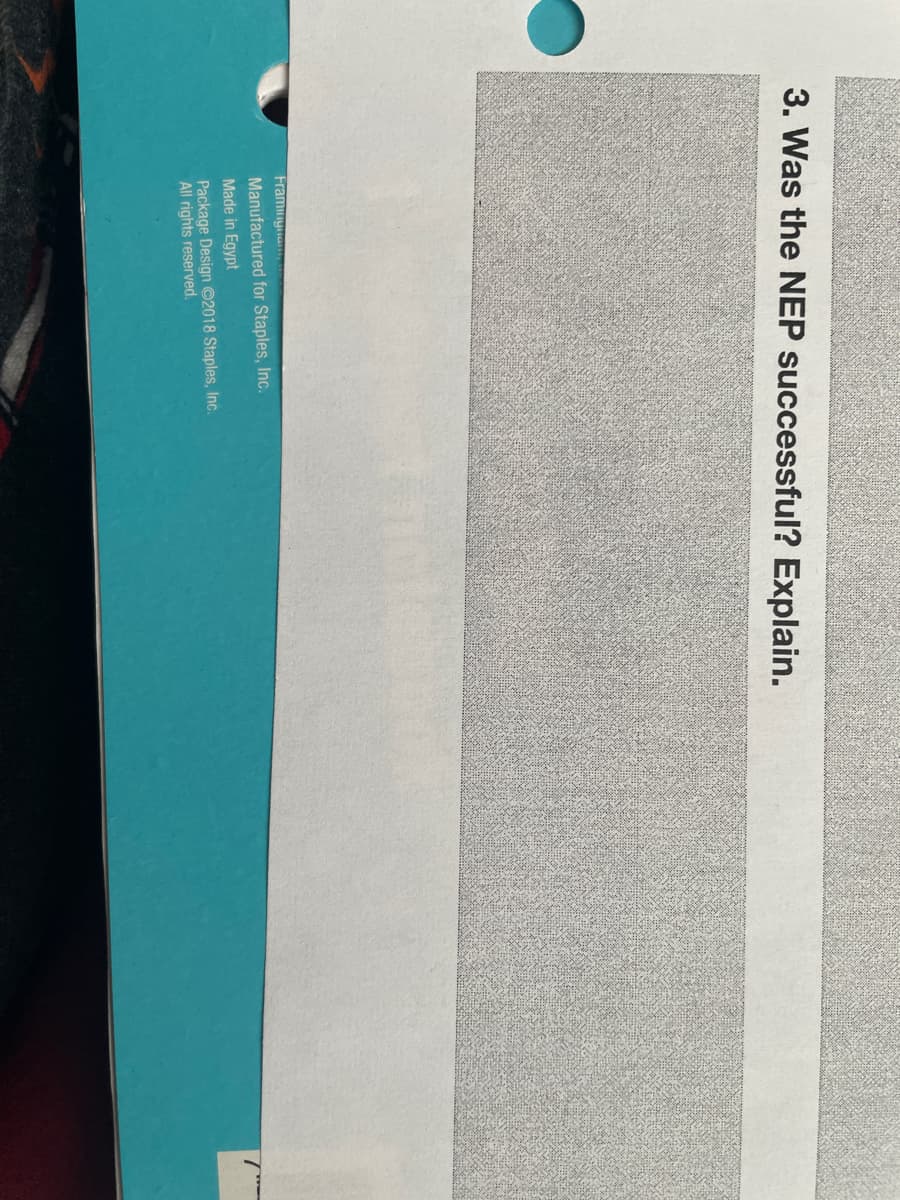3. Was the NEP successful? Explain.
Related questions
Question
Don’t understand question 3

Transcribed Image Text:New Economic Plan (NEP): A Temporary Retreat from Communism
The long years of war, the Bolshevik policy of War Communism, the Russian Famine of 1921, and
the Civil War took their toll on Russia and much of the country lay in ruins. There were many
peasant uprisings, the largest being the Tambov Rebellion. After an uprising by the sailors at
Kronstadt in March 1921, Lenin replaced the policy of War Communism with the New Economic
Policy (NEP), in a successful attempt to rebuild industry and, especially, agriculture.
Though the goal of Lenin and the Soviet government was to create a truly communist state in
Russia, he realized that their economic policies were damaging the country and threatening the
Bolshevik hold on Russia. The New Economic Policy included the return of most agriculture,
retail trade, and small-scale light industry to private ownership and management while the state
retained control of heavy industry, transport, banking, and foreign trade. The peasantry were
allowed to own and cultivate their own land, while paying taxes to the state. The New Economic
Policy reintroduced a measure of stability to the economy and allowed the Soviet people to
recover from years of war, civil war, and governmental mismanagement. The small businessmen
and managers who flourished in this period became known as NEP men.
Though successful, the NEP was viewed by the Soviet government as merely a temporary
measure to allow the economy to recover while the Communists solidified their hold on power
and move the country towards a centralized communist government.
Source: Adapted from "Vladimir Lenin." New World Encyclopedia.
1. Why did Lenin start the New Economic Policy (NEP)?
2. How was the NEP different than War

Transcribed Image Text:3. Was the NEP successful? Explain.
Framnynam
Manufactured for Staples, Inc.
Made in Egypt
Package Design ©2018 Staples, Inc.
All rights reserved.
Expert Solution
Step 1
Lenin operated as the initial and founding chief of administration of Soviet Russia between the years 1917 and 1924 and to the Soviet Union between the years 1922 and 1924. Beneath his government, Russia, and subsequently the Soviet Union, have become ruled through the Soviet Communist Party by becoming a one-party socialist state At the tenth Congress of the Communist Party in the year 1921, Lenin initiated his New Economic Policy.
Trending now
This is a popular solution!
Step by step
Solved in 2 steps
